With almost 49 hours of video instruction, there is bound to be something for any software developer to profit from the purchase of the Fluent 2014 Conference. Within my review, I will first review the keynotes sessions and then a small sampling of the many tutorial offerings.
Unlike many developer conferences the keynotes were a pleasant surprise in that they were not the typical topical overviews. For example in the JavaScript: Taking both the High and the Low Roads, Mozilla’s Brendan Eich gives a succinct technical discussion about ES6, ES7, as well as how JS is moving forward with gaming demos demonstrating frames per second speed improvements.
In Reading, Writing , Arithmetic... and Javascript? - Using JavaScript and ProcessingJS Pamela Fox from Khan Academy provides stats from their younger uses on the potential of using Javascript as a teaching tool for not only programming but also various disciplines.
Virtual Machines, JavaScript and Assembler with Scott Hanselman from Microsoft was a humorous presentation where he subtly highlighted Azure’s strength as a VM enabler as well as showing, how ever so briefly, that Visual Studio now works with Chrome and Mozilla developer tools. Incidentally, JavaScript was termed the Assembler of the Internet.
The Humble Border-Radius - The CSS border-radius is an unsung hero according to Lea Verou from Independent. Her demo shows the CSS code in which elliptical curves, shapes , animations, as well as text content within the visual elements are produced. Finally, future derivations of the border-radius is discussed.
Next was Speed, Performance, and Human Perception by Ilya Grigorik of Google. While there is much merited concern for milliseconds and frames per seconds, engineers need to be aware of the user that is interacting with their application. Developers should consider what is the task that the user is trying to achieve? What are the performance metrics necessary to fulfill that task? Then, what do we need to do to connect the two.
Then, Keynote with Paul Irish - Delivering the Goods. Paul reviews various stats as well as the lifecycle of a web page request and response to gain a better performance concerning page load. He also examines the various protocols involved in the HTTP request and response cycles. In short, eliminate render-blocking JavaScript, minimize render-blocking CSS, and serve the content in the initial HTML (no redirects).
In Beyond Pushing “Play”: Interactive, Data-driven Videos for a Web-based World Susan McGregor from Columbia University discusses the power of storytelling on the web via video. She also highlighted the need for a new interactive experience with video with the new DataDocs platform.
The Goodness of JavaScript by Aaron Frost and Dave Geddes. In a humorous presentation Frost and Geddes share JavaScript goodness such as compare operators, the latest tools such as Node Webkit, PLV8 (embedding Javascript in PostGreSQL), and ECMAScript 6 as well as their new tool called TrollCount that curbs trolling on the interwebs. In short, the goodness in JavaScript is not the language, but its you.
The final keynote was with Yehuda Katz and Tom Dale from EmberJS. Yehuda and Dale discuss the distinctives between a framework and a toolkit for building your own framework. In this talk they defend frameworks. In short, a framework should encourage good choices while allowing the developer the freedom to do what they want, which may mean the wrong thing.
The next set of video presentations that I jumped into were the tutorials. I do like how O’Reilly presents the presentations with the speaker in a small window to the left or right of your view and what they are showing via a slide presentation in a large window to the side of the speaker.
The first lesson that I viewed was Mark Bates and his presentation of on AngularJS. He details the advantages of Angular in comparison to both BackboneJS and EmberJS. Angular is a more light-weight framework as well as it’s possesses a larger mindshare as more developers learn AngularJS. Also there is a comparison of the basic models of each of the above frameworks that results in Bates determining that between Angular, Backbone, and Ember, Angular is the better choice. Then a review of downloading Angular is provided. Then Bates gets into Angular controllers, templates, scope, routing, directives, events, and testing. What is nice is that there are few slides with a great deal of live coding. Go here to get the code as well as instructions on how to setup your system to follow along with the presentation.: https://github.com/markbates/fluent-2014.
Next, I viewed the JavaScript Smackdown! Choosing Your MVC between Angular, Ember, and Backbone presentation by Brian Holt of reddit. He first demos a Backbone app showing both the model and the view. Following that Holt constructs a basic Ember app. Then, he jumps into Angular by showing the basic elements of the view, model, and controller. Finally, Holt provides what he sees as the strengths of each platform and when to use that framework.
After that I watched the Meteor: A Full-stack JavaScript Framework for Modern App Development by Matt DeBergalis of Meteor. In short, DeBergalis shows the power of Meteor has a creates a fully functioning app in 20 minutes.
Finally, I watched Functional Programming Patterns for the Non-Mathematician by Brian Lonsdorf of loop/recur. Lonsdorf provides rapid review of the Lenses, Null Checker, Error Handling, Future Values, Nesting, Multiple Null Args, Accumulation, and Combinators patterns. He then provides code examples of the Lenses and Null Checker patterns. Finally, Lonsdorf provides and example of Monads in code.
In conclusion, not only is the video and audio quality great but the content is as well. Given the various topics and the skill of the presenters, it is highly probable that there is something beneficial for you from the Fluent 2014 Conference.
